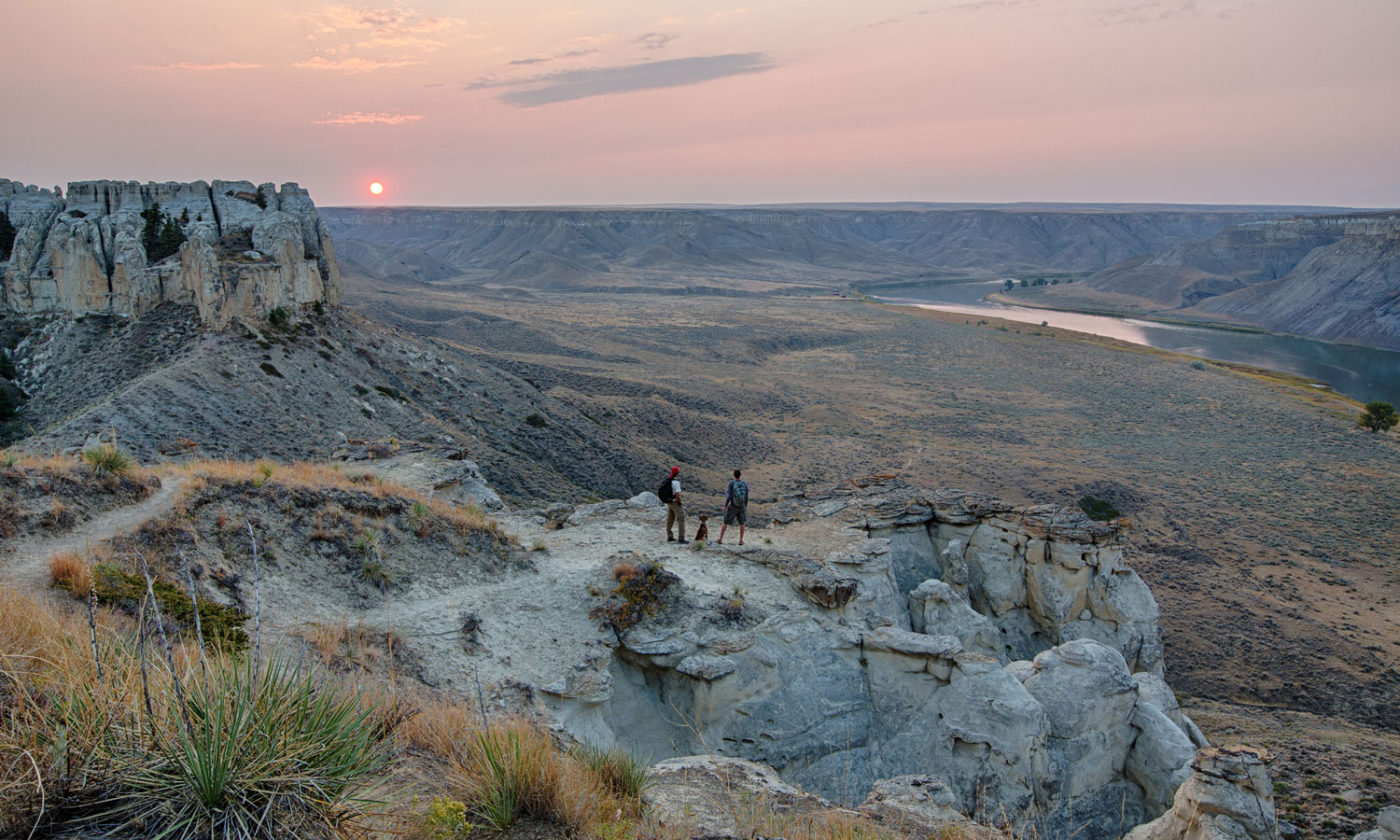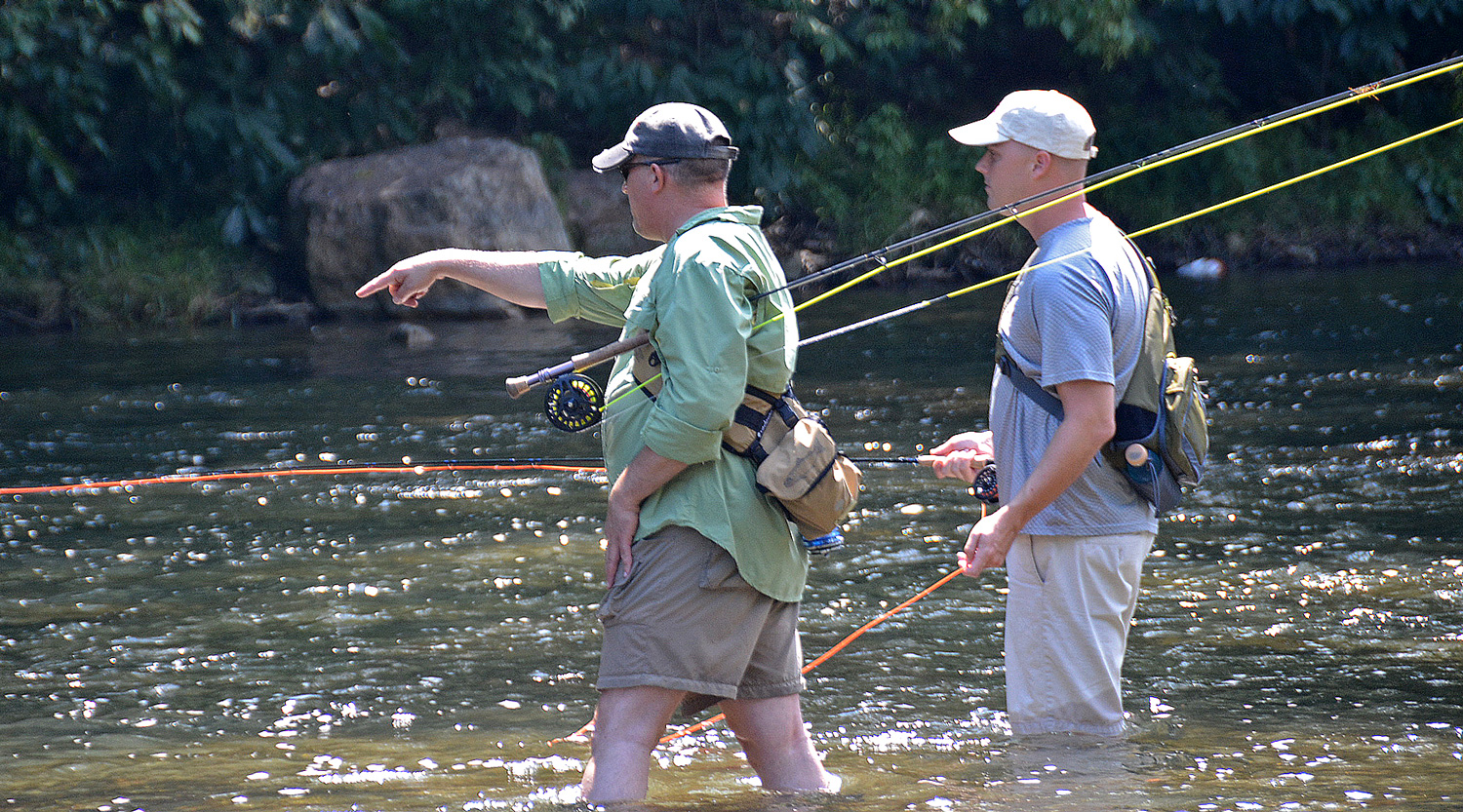Gutting programs and agency budgets that support healthy fish and wildlife, public access to the outdoors, and our nation’s rich heritage will hurt rural economies
A broad coalition committed to safeguarding the future of our country’s fish and wildlife populations, outdoor recreation opportunities, and national heritage is dismayed at the deep level of cuts recommended by President Trump in an official budget request released today.
If enacted, Trump’s budget proposal would offset a $54-billion boost to defense spending by cutting foreign aid and domestic programs. This includes a proposed 12-percent decrease to the Department of the Interior budget, which is likely to slash resources needed to manage public and private lands, support state management of fish and wildlife, and enact conservation across the country. This would have devastating impacts on the ground for natural resources, historic sites, and the rural American communities that thrive off outdoor recreation and tourism spending.
“Gutting the programs and agency funding that helps conserve fish and wildlife and our sporting traditions is no way to support the rural and local economies that need outdoor recreation dollars most,” says Whit Fosburgh, president and CEO of the Theodore Roosevelt Conservation Partnership, a lead group in the coalition known as America’s Voice for Conservation, Recreation, and Preservation. “Ignoring the real benefits of investing in conservation will erode the foundation of hunting and fishing—public access and quality places to pursue our traditions.”
Trump’s budget could also shrink the federal workforce by the largest margin since World War II. “Outdoor recreation businesses drive spending and sign paychecks in rural communities, but they certainly couldn’t thrive if public lands and waters were closed or left without active management,” says Amy Roberts, executive director of the Outdoor Industry Association. “The places where America plays, and the products Americans use in the outdoors, wouldn’t exist without those other made-in-America jobs—those of the federal land managers, park rangers, and biologists who safeguard our lands and waters so we can enjoy them.”
Congress still holds the power of the purse, and hundreds of organizations and businesses are calling on lawmakers to work constructively and collaboratively on a budget that reflects the real value of outdoor recreation opportunities, fish and wildlife habitat, and preservation of America’s rich history. More than 200 AVCRP members sent a letter to Congress and to the White House asking for the strongest possible funding levels to support the conservation of America’s wildlife, fisheries, public lands, cultural resources, and associated economic and recreational benefits.
“Lawmakers should understand that cutting the budget for America’s historic preservation programs will directly affect each state’s bottom line,” says Adam Jones, associate director of government relations for the National Trust for Historic Preservation. “Slashing federal funding for historic preservation and National Park Service operations will negatively affect heritage tourism, limit states’ abilities to protect their most important historic sites, and blunt the economic benefits of the federal historic rehabilitation tax credit, which has preserved more than 41,000 buildings, created 2.3 million jobs, and catalyzed $121 billion in community revitalization for Main Streets throughout America.”
AVCRP first joined the federal budget debate in 2011, when sequestration threatened to undo conservation and our country’s outdoor legacy. Learn more about the coalition here.








Support wildlife Conservation
What needs to happen as for cutting the Department Of Interior’s budget is that the entire federal agency needs to be directly Audited. There are many things the agency has undertaken over the past 10 to 20 years that have zero interest in Habitat Conservation, Restoration, Enhancement or protection there of. Many studies come to mind that are not relevant to CRP,WRP,CREP programs. Costing the agency millions every year. We need to get back to the sole primary Mission of Habitat Conservation and the implementation of that. The federal buracracy with in has grown and so has that budget to maintain that monster that sucks up valuable resources. Often such as times like these, instead of cutting the over-employment rolls or the elimination of study revenue sinkholes we maintain the workforce but cut Key conservation programs. Audit the agency and lets make cuts in the right places. USFWS is another agency that should be audited. They to are guilty of doing the same.
I am a United States Sportsmen and I do agree with reviewing these agencies budgets and making cuts that need to be made to things that have absolutely nothing to do with Habitat Restoration, Enhancement , protection or acquisition of. Getting back to the fundamentals of conservation is going to be critical to the future of conservation itself. The same message could be applied to state agencies just the same.
Sincerely,
William J. Smith
Sioux City Iowa
5309 hwy 75n lot 44
51108
712-274-3343 h
712-202-3235 c
fhd101@aol.com
I am open to express this fact in front of congress members.
Your comments are spot on. There is plenty of money for conservation projects, they need to prioritize what is important. But instead doing the right thing they go and scare people about conservation cuts. Typical big government reaction.
Bloated, federal budget needs cutting badly. By cutting Interior’s budget, they can focus on the most important tasks. By cutting the budget, they can eliminate redundant jobs and shrink the bureaucracy. But, the bureaucrats never do that, instead they cut effective programs and maintain the bloated bureaucracy, then blame Congress. Swamp-draining commence !! Eliminate 75 % of the bureaucracy by combining all departments, agencies and offices that deal with America’s natural resources under ONE department and all that bureaucracy is immediately obsolete !! Billions saved !! Plenty of money for actual conservation projects !! BAM.
Wow… sad to see that the Kool Aid has done a number on you. Without conservation and protecting federal lands our environment (where you live and breathe) and sportsman opportunities are gone. Teddy Roosevelt, a true Republican, had it right and it’s simply a disgrace to see what has become of the G.O.P.
We must be prudent…NOT GREEDY!
Yes, the federal budget needs to be cut badly, however its the DoD portion that needs it. Or how about consolidating all the armed forces together do you think that would solve bureaucratic issues?
If we captured all that hot and odorous air about bureaucracy and government overreach we would have plenty of gas to fuel the nation. Support conservation and elect officials that do the same.
I strongly support conservation program funding!
A 12 % budget cut is not gutting the agency Kristyn, enough with the inflammatory language already. As a nation we are over 20 trillion dollars in debt. The cuts need to start somewhere. I don’t know anyone who wants their pet program or agency cut whether it is Planned Parenthood, NPR or research regarding the spread rate of catsup once dispensed. Folks all think their program is critical. I agree with Bill Smith. Every federal agency should undergo a thorough audit by an impartial firm. Inefficiencies and duplication of services can be identified and eliminated. This would be more effective than across the board cuts. When your ship is sinking you plug the holes and turn on the pumps, not drill more holes. Our nation is sinking in debt. What future will our children and conservation have if we don’t turn this around.
If you want to talk about waste you can start with the largest budget the MILITARY!There is more waste and black money there than in all other agencies combined.Lets get real about where all this waste trully is. Instead of scapegoating the DOTI they should find the cuts and waste in the military first as it is by far the largest budget with the most waste.Our Natural resources are by far the most valuable asset we have so we need to focus on perserving it.
Bill Smith…where do you get this “fact” you speak of?
It should be NO SURPRISE what is proposed in this budget…now we want to build a wall!! not with my tax money and to gut our natural resource programs to boot!
The Department of Defense, where Trump wants to spend tens of billions more dollars, is arguably the biggest, most bloated government bureaucracy in the country. I served and saw it first hand. Yet, somehow it usually seems to get a pass from political conservatives when the subject of budget belt-tightening, wasteful spending and fiscal accountability comes up.
In regards to Mr. Smith’s comment on auditing the Department of the Interior. The programs such as CRP and CREP are administered by The Farm Services Administration. This agency along with the Natural Resources Conservation Service (NRCS) derive their funds from the Farm Bill. Having worked for six years in an NRCS office I can say that the audit should be done on the massive tax dollar giveaways for minimal return under these Farm Bill programs.
…and this will “Make America Great Again”?
I am strongly opposed to the budget cuts proposed by President Trumps budget. I strongly believe that rather than cutting 54 billion from important federal programs at least 54 billion in savings due to waste could be cut from the defense budget. Everyone knows how wasteful defense spending can be from buying things the military doesn not want to paying way too much for things.
The Pentagon supposedly “lost “ $6.5 Trillion of our hard earned tax payer dollars!!! “Lost” is just another word for stole. The U.S. already spends 8 times more on defense than the next 8 nations combined.
All of these cuts to natural resources conservation, environmental protections, education, financial sector oversight, etc., along with the building of a massive Mexico wall and increases in defense spending are a political shell game. Oversight and protections of america’s natural resources and assets is already severely underfunded. It’s pretty obvious to see where the audits and cuts really need to be made.
Be prepared for a rip off of the american taxpayer that will make the banking and wall street plunder of 2007 / 2008 pale in comparison.
http://nation.foxnews.com/2016/08/18/trillions-go-missing-military-pentagon-cant-account-65t-taxpayer-cash
The VA FIduciary Organization torments could certainly stand some thinning. That organization forces veterans families to justify every penny their disabled WWII Veterans spend for skilled nursing and health care. I lost my career spending time filling out forms and being harassed by that abusive agency. We need to lay off some of those bureaucrats instead of cutting the funding for our conservation agencies. The VA Accountants and Attorneys haven’t justified their jobs.